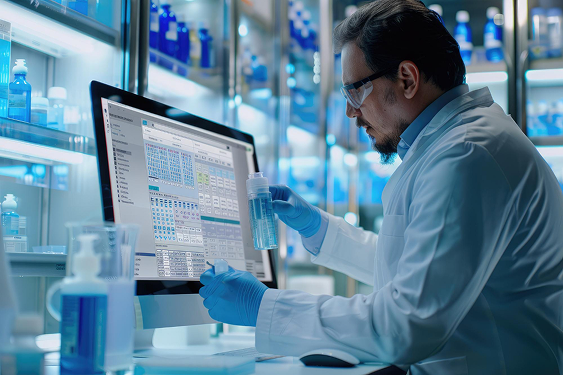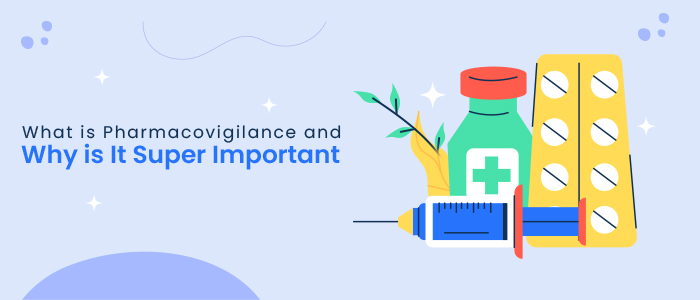Features and Functions of Pharmacovigilance Software
Pharmacovigilance software stands as a cornerstone in ensuring the safety and efficacy of pharmaceutical products. With its array of features and functionalities, pharmacovigilance software empowers healthcare professionals to monitor, analyze, and manage drug safety data effectively. Let’s delve into a detailed exploration of the key features and functions that pharmacovigilance software offers, ranging from adverse event reporting to compliance tracking.
I. Adverse Event Reporting
Adverse event reporting is at the core of pharmacovigilance software, allowing healthcare professionals to capture and document adverse events associated with pharmaceutical products. Key features in this area include:
- User-Friendly Interface: Intuitive interfaces streamline the adverse event reporting process, guiding users through data entry fields and ensuring completeness and accuracy in reporting.
- Customizable Forms: Pharmacovigilance software offers customizable reporting forms to accommodate various types of adverse events and capture relevant information, such as patient demographics, medical history, and drug details.
- Integration with Data Sources: Seamless integration with electronic health records (EHRs), clinical trial management systems (CTMS), and other data sources enables automatic data capture, reducing manual entry errors and enhancing efficiency.
II. Signal Detection
Signal detection capabilities enable pharmacovigilance software to identify potential safety issues and emerging trends in adverse event data. Key features in this area include:
- Advanced Analytics: Sophisticated data analytics tools, including statistical algorithms and machine learning models, analyze adverse event data to detect patterns, clusters, and associations that may indicate safety signals.
- Risk Assessment Tools: Pharmacovigilance software provides risk assessment tools to evaluate the significance and severity of identified signals, helping healthcare professionals prioritize further investigation and risk mitigation efforts.
- Real-Time Monitoring: Real-time monitoring capabilities enable continuous surveillance of safety data, allowing for prompt detection and response to emerging safety concerns.
III. Risk Management
Effective risk management is essential in mitigating potential risks associated with pharmaceutical products. Pharmacovigilance software offers a range of features to support risk management efforts, including:
- Risk Evaluation and Mitigation Strategies (REMS): Pharmacovigilance software facilitates the development and implementation of REMS programs, including risk communication plans, medication guides, and restricted distribution systems, to minimize patient exposure to known or potential risks.
- Safety Profile Management: Comprehensive safety profile management tools enable healthcare professionals to monitor and update the safety profiles of pharmaceutical products based on emerging safety data and regulatory requirements.
- Adaptive Risk Management: Adaptive risk management features allow for iterative risk assessment and modification of risk management strategies based on evolving safety data and regulatory feedback.
IV. Compliance Tracking
Ensuring compliance with regulatory requirements is paramount in pharmacovigilance. Pharmacovigilance software offers robust compliance tracking features to facilitate adherence to regulatory standards and guidelines, including:
- Regulatory Reporting Automation: Automated regulatory reporting functionalities streamline the submission of safety reports to regulatory authorities, ensuring timely compliance with reporting deadlines and requirements.
- Audit Trail Documentation: Comprehensive audit trail documentation capabilities track changes made to safety data, ensuring transparency and accountability in pharmacovigilance activities and regulatory submissions.
- Compliance Monitoring Dashboard: Compliance monitoring dashboards provide real-time visibility into pharmacovigilance performance metrics, allowing healthcare professionals to identify areas of non-compliance and take corrective actions as needed.
V. Reporting and Analytics
Comprehensive reporting and analytics capabilities empower healthcare professionals to derive actionable insights from pharmacovigilance data. Key features in this area include:
- Customizable Reporting Templates: Pharmacovigilance software offers customizable reporting templates to generate standardized safety reports for internal stakeholders, regulatory authorities, and other stakeholders.
- Interactive Data Visualization: Interactive data visualization tools, such as dashboards and heatmaps, enable healthcare professionals to visualize and explore safety data trends, patterns, and outliers, facilitating data-driven decision-making.
- Trend Analysis and Forecasting: Trend analysis and forecasting functionalities allow healthcare professionals to identify long-term safety trends and anticipate future safety risks, enabling proactive risk management strategies and interventions.
VI. Data Management and Integration
Pharmacovigilance software often needs to integrate seamlessly with various systems and processes within a pharmaceutical company’s infrastructure to ensure efficient operations and data flow. Integration enables data sharing, streamlines workflows, and enhances overall pharmacovigilance activities.
Pharmacovigilance software may need to integrate with:
Clinical Trial Management Systems (CTMS): Integration with CTMS allows for the seamless transfer of adverse event data collected during clinical trials into the pharmacovigilance system. This ensures that safety data is promptly captured and analyzed throughout the drug development process.
Electronic Health Record (EHR) Systems: Integration with EHR systems enables pharmacovigilance professionals to access patient medical records and history, facilitating comprehensive evaluation of adverse events and potential drug-related issues.
Drug Safety Databases: Integration with internal drug safety databases ensures that adverse event data collected from various sources, such as clinical trials, post-marketing surveillance, and spontaneous reporting systems, are consolidated and managed efficiently within the pharmacovigilance system.
Regulatory Reporting Systems: Integration with regulatory reporting systems allows for automated submission of safety reports to regulatory authorities, ensuring compliance with regulatory requirements and deadlines.
Data Analytics Platforms: Integration with data analytics platforms enhances the capability of pharmacovigilance software to analyze large datasets and identify safety signals and trends, thereby supporting informed decision-making and risk assessment.
Overall, integration with these systems within a pharmaceutical company’s infrastructure ensures that pharmacovigilance software operates seamlessly within existing workflows, maximizes efficiency, and facilitates effective management of drug safety data throughout the product lifecycle.
Conclusion
Pharmacovigilance software plays a critical role in ensuring drug safety and protecting public health. With the growth of technology and data, the integration of pharmacovigilance software with various systems has become crucial for efficient management of drug safety data. This integration enables seamless capture, analysis, and reporting of adverse event data from various sources throughout the product life cycle, promoting effective risk management and enabling timely decision-making.
As the pharmaceutical industry continues to evolve, the integration of pharmacovigilance software with internal drug safety databases, regulatory reporting systems, and data analytics platforms will become even more vital for ensuring the safety of medicines. It is essential for pharmaceutical companies to prioritize the integration of pharmacovigilance software to effectively manage drug safety and ensure compliance with regulatory requirements.




